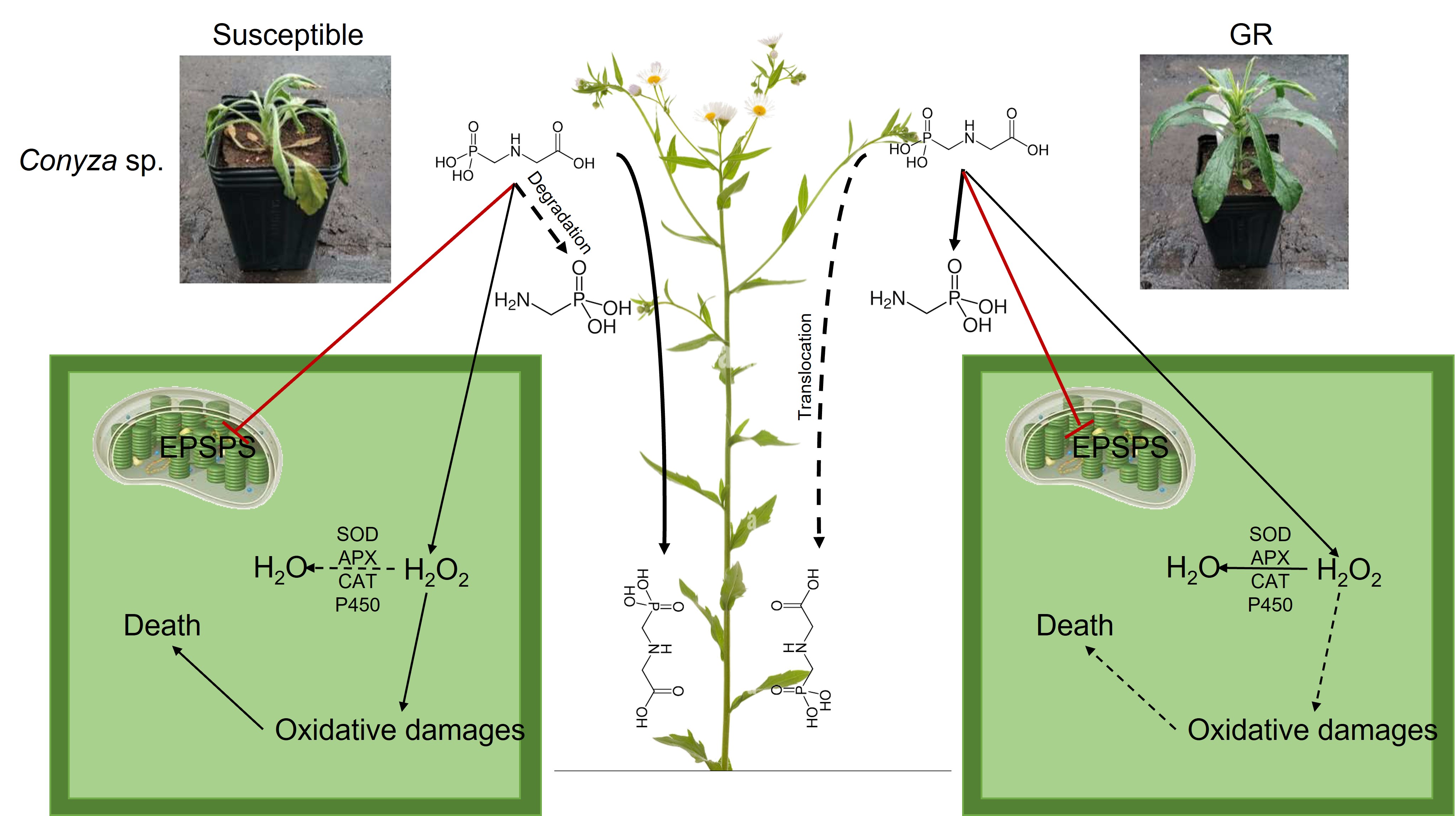The intensive global use of glyphosate has led to the evolution of glyphosate resistant (GR) weed species, including the economically damaging horseweed (Conyza sumatrensis). We evaluated the glyphosate resistance mechanisms of C. sumatrensis. While 5-enolpyruvylshikimate-3-phosphate synthase activity was similar between the glyphosate resistant (GR) and nonresistant biotypes, plants from the GR population accumulated lower shikimate levels than susceptible ones, suggesting the absence of target-site resistance mechanisms. Decreases over time in glyphosate concentrations in GR leaves were not accompanied by increases in glyphosate concentrations in their stem and roots, indicating lower glyphosate distribution rates in GR plants. The early appearance of aminomethylphosphonic acid (the main glyphosate metabolite) in leaves, as well as its presence only in the stems and roots of GR plants, suggests faster glyphosate metabolism in GR plants than in susceptible ones. GR plants treated with glyphosate also showed greater antioxidant (ascorbate peroxidase [APX] and catalase [CAT]) and cytochrome P450-enzyme activities, indicating their great capacity to avoid glyphosate-induced oxidative stress. Three non-target mechanisms (reduced glyphosate translocation, increased metabolism, and increased antioxidant activity) therefore confer glyphosate resistance in C. sumatrensis plants. This is the first time that APX, CAT and P450 enzyme activities are related to GR in C. sumatrensis.

